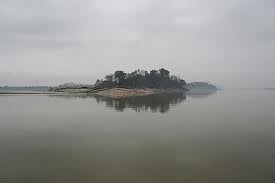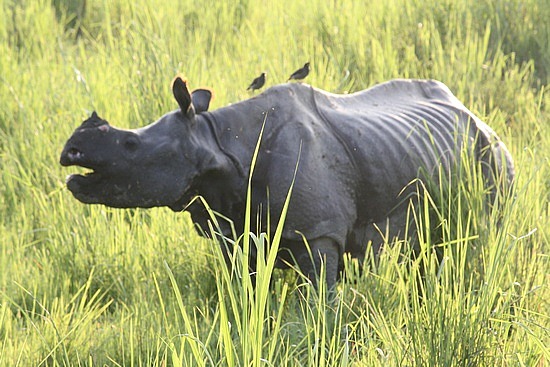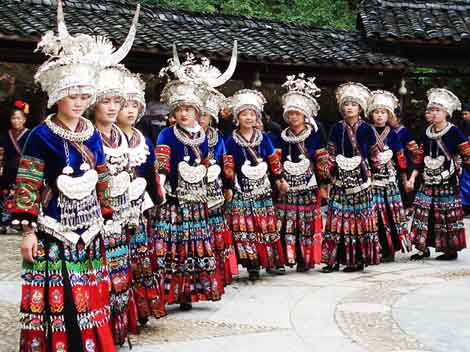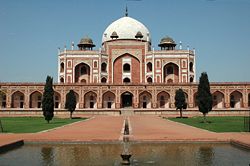Places to Visit: Delhi - Guwahati - Nameri - Kaziranga - Dibrugarh - Tinsukia - Khonsa - Miao - Dibrugarh - Delhi or Mumbai
Day 1: Delhi
Arrival at the airport & transfer to the hotel. Overnight at hotel.
Day 2: Delhi
Full day tour of Old Delhi & New Delhi. Overnight at the hotel.
Delhi, the capital of India is the third largest city of the world, exceeded in size by Calcutta and Mumbai. Delhi is situated in north central India and stands on the west bank of Yamuna river. Haryana bound it on the east by the state of Uttar Pardesh and on the north, west and south. The eternal Yamuna has witnessed the glory and the tumultuous history of the 3000-year-old Delhi. Delhi is spread over an area of 1483 sq. kilometers, 216 meters above sea level and has a population of around 14 million.
The amalgamation of various cultures, traditions, and religions has painted Delhi in color, which is brought from all over India. Delhi is a true cosmopolitan city always on the move. Delhi remains the center of power. Once it was a city of royal power. Then it became the seat of colonial power. Later it was the seat of bureaucratic power.
The seat of political power it has always been. Today it is emerging as an important center for corporate power too. It is a perfect introduction to the cultural wealth, the complexities and dynamism of India. Delhi has always been the hub of activity, art, culture and the history of the whole country and continues to do so. It is divided into two parts Old Delhi & New Delhi.
Day 3: Guwahati
Early morning transfer to the airport for flight to Guwahati. Arrive at Guwahati. Pick up from station /airport and transfer to hotel. Guwahati is located at the river Brahmaputra. Later embark on sightseeing of Guwahati by car. You visit Kamakhya temple, Nabagraha temple (temple of nine planet), Umananda temple situated on the peacock island in the middle of Brahmaputra river and musuem. Transfer to hotel. Overnight at hotel in Guwahati.
hotel. Guwahati is located at the river Brahmaputra. Later embark on sightseeing of Guwahati by car. You visit Kamakhya temple, Nabagraha temple (temple of nine planet), Umananda temple situated on the peacock island in the middle of Brahmaputra river and musuem. Transfer to hotel. Overnight at hotel in Guwahati.
Day 4: Guwahati - Nameri
After breakfast drive to Nameri National Park. Near the Jia Bhoroli river, the Nameri National Park sprawls over from Assam to Aruachal Pradesh. As in Kaziranga, the best way to travel within the Park is atop elephants. There are no roads inside the park. The park is home to the Mithun or Indian bison and the rare White Winged Wood Duck, among the most endangered avian species in the world. Safari inside the jungle. Near the Jia Bhoroli river is the Eco Camp, a unique experiment by the Assam Anglers\' Association and the state\'s Forest Department. Overnight at Eco-tourist camp.
Day 5: Nameri
The Camp organises exciting white river rafting, against the divine backdrop of lush forests and snow-capped mountains. Tourists can try their hand at casting for the elusive and endangered golden Mahseer fish, a denizen of the waters. This is part of an ecological campaign to save the mahseer - so part of the river is protected and the fish are caught and then released in a bid to stabilise their dwindling numbers. Overnight at Eco-tourist camp.
Day 6: Nameri - Kaziranga 
In the morning drive to Kaziranga National Park (120 km). Kaziranga is famous for the great One-Horned Rhinos. Tigers which are natural enemies of rhinos are also there in sizable numbers in this area. Other attractions of this national park include the wild buffalo, magnificent swamp deer, hog deer, wild boar, Hollock gibbon, capped langur and ratel (badger).
Amongst the birds, the crested serpent eagle is common while palla\'s fishing eagle and gray headed fishing eagle are frequently seen. Others include the Great Adjutant Stork, crane, Bengal floricab, bar-headed goose, whistling teal, and pelican. Reach Kaziranga and check in resort inside the park. Free day to explore inside the park. Overnight in resort at Kaziranga National Park
Day 8: Kaziranga
Enjoy early morning elephant safari inside the national park. Later proceed for a jeep safari inside the park. Overnight in resort at Kaziranga National Park
Day 9: Kaziranga - Dibrugarh (Saikhowa National Park)
In the morning drive to Dibrugarh (250 km) - Saikhowa National Park which is famous for its semis wild horses and other wild life like the white-winged wood duck, tiger, leopard, elephant, Asiatic buffalo etc and more than 250 varieties of birds. Explore inside the park. Check in hotel. Overnight at hotel in Dibrugarh.
Day 10: Dibrugarh
Explore full day inside the national park. Overnight at hotel in Dibrugarh.
Day 11: Dibrugarh - Tinsukia - Khonsa - Miao (Namdapha National Park)
After breakfast drive to Miao (250 km). Here the Namdapha National Park is famous for tiger, leopard, snow leopard and clouded leopard. Unique feature of the park is that the park covers wide range of altitude from 200 mtr to 4500 mtrs. The Namdhapa National Park is famous for the extremely elusive snow leopard, and the clouded leopard. Three major rivers drain this area and flow into the Noa Dihing, a tributary of the Brahmaputra. Some of the inhabitants of the Park include the gaur or mithun, elephant, Himalayan black bear, takin, the wild goat peculiar to the Patkoi range, musk deer, slow loris, binturong and the red panda. Several primate species like the Assamese macaque, pig-tailed macaque, stump-tailed macaque and the hoolock gibbon can be found in the area. The inaccessibility of a major portion of the Park has helped in preserving the pristine quality of the region. The Park is also a Tiger Reserve under Project Tiger. Overnight at tented accommodation inside the park.
Day 12 : Miao
Explore full day inside the park. Trek in the forest and you are free for an elephant safari. Overnight at tented accommodation inside the park.
Day 13: Miao - Dibrugarh - Delhi or Mumbai
Drive back to Dibrugarh (250 km) for onward journey. Drop to Dibrugarh airport .
Latest News
Nov
Half a century ago there were between 25,000 and 30,000 tigers in Asia. According to a report published in 1994 by the World Wide
Dec
Mysterious, powerful, majestic--the tiger stands tall in our imaginations.But, in truth, tigers are disappearing in the wild. Jus
Nov
Tiger cubs are born blind and weigh only about 2 to 3 pounds (1 kg), depending on the subspecies. They live on milk for 6-8 weeks
